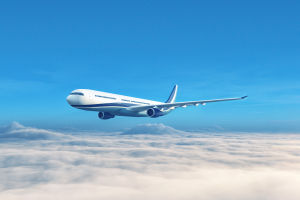When we talk about space, we’re not just talking about stars and rockets—we’re talking about bold first steps, historic moments, and records that push human limits.
Together, let’s revisit 20 of the most groundbreaking “firsts” in space exploration history. Get ready for a ride beyond Earth!
1. The First Human Spaceflight
On April 12, 1961, we entered a new era when Vostok 1, the first manned spacecraft, was launched by a pioneering space agency in Eastern Europe. Yuri Gagarin made history, orbiting Earth once in just 108 minutes. The spacecraft flew at an altitude ranging from 169 to 315 kilometers. Before this mission, they had conducted several unmanned tests—including one with 2 dogs and 50 mice!
2. First Spacewalk
On March 18, 1965, cosmonaut Alexei Leonov stepped into space from Voskhod 2 and became the first human to walk in space. It wasn’t easy—his spacesuit ballooned, making movement hard. Getting back inside the airlock was a struggle, but he managed it by reducing his suit pressure, sweating buckets, and losing 12 pounds in the process!
3. First Space Docking
March 16, 1966: American astronauts Neil Armstrong and Dave Scott manually docked Gemini 8 with the unmanned Agena target vehicle. This was the first time two spacecraft joined in orbit—a vital step for future moon landings.
4. Longest Spaceflight by a Single Spacecraft
On June 1, 1970, the Soviets launched Soyuz 9, which stayed in space for 17 days and 17 hours. The mission aimed to study how extended zero-gravity affects the human body.
5. The First Space Station
The world’s first space station, Salyut 1, launched on April 19, 1971. Weighing over 18 tons, it orbited Earth until October that same year, opening the door to long-term human presence in space.
6. The Longest Operating Space Station
Mir, launched in 1986, stayed operational for 15 years. A total of 31 crewed and 62 cargo missions docked with it. It hosted 16500 scientific experiments before its controlled descent into the Pacific Ocean in 2001.
7. First to Orbit the Moon
On December 21, 1968, Apollo 8 launched with 3 astronauts and became the first mission to orbit the Moon. By Christmas Eve, they were circling our lunar neighbor—a moment that captivated the world.
8. First Moon Landing
July 20, 1969: Neil Armstrong made his legendary “giant leap” from Apollo 11. It was the first time humans walked on another world. That moment still echoes in history books and our imaginations.
9. Longest Single Space Mission
cosmonaut Valeri Polyakov set a world record by staying in space for 437 days straight aboard Mir from 1994 to 1995. He orbited Earth over 7,000 times and traveled more than 300 million kilometers!
10. Total Time in Space Record
In 2005, Sergey Krikalev spent more time in space than anyone else—747 days across multiple missions. That’s over two full years floating above Earth!
11. Farthest Human Travel in Space
In 1970, Apollo 13’s crew reached 400,171 km from Earth, making it the farthest humans have ever been from our planet—even though the mission was a near disaster.
12. Fastest Crewed Spaceflight
Returning from the Moon in May 1969, Apollo 10 reached 11.1 kilometers per second, setting the speed record for crewed space travel.
13. First Astronaut to Die on a Mission
Vladimir Komarov tragically died on April 24, 1967, when his parachute failed during re-entry. He became the first astronaut to sacrifice his life during an actual mission. A small asteroid was later given his name.
14. Largest Space Station
Completed in 2010, the International Space Station weighs 423 tons and stretches over 100 meters long. It can host up to 7 astronauts at a time and includes 6 science labs.
15. First Female Astronaut
Valentina Tereshkova became the first woman in space in 1963. She was a parachute enthusiast turned cosmonaut who orbited Earth 48 times in nearly three days.
16. First Woman to Walk in Space
In 1984, astronaut Svetlana Savitskaya took a 3.5-hour stroll outside Salyut 7, making her the first woman to complete a spacewalk.
17. Most Astronauts During a Space Docking
On June 29, 1995, the Atlantis shuttle docked with Mir, bringing together 5 U.S. The astronaut and five other astronauts - a total of 10 people sharing space in space!
18. First Space Shuttle
Columbia, the first reusable space shuttle, launched in April 1981. With a wingspan of 24 meters and room for 8 astronauts, it changed how we traveled to space. It flew 28 missions before retiring.
19. Most Space Shuttle Flights
Between 1981 and 2005, the U.S. flew five space shuttles in 114 missions—Columbia, Challenger, Discovery, Atlantis, and Endeavour. These missions carried satellites, astronauts, and science labs to space.
20. Farthest Human-Made Object
Voyager 1, launched in 1977, is still traveling through space. It’s visited Jupiter and Saturn, taken amazing photos, and is now beyond the edge of our solar system. It continues its lonely journey toward the center of the cosmos.
Thanks for joining this cosmic journey!
Lykkers, space exploration isn’t just about machines and rockets—it’s about courage, curiosity, and pushing the limits of what we believe is possible. Which of these milestones surprised you the most? Let us know what you'd like to explore next—we’re always ready for another adventure together!

